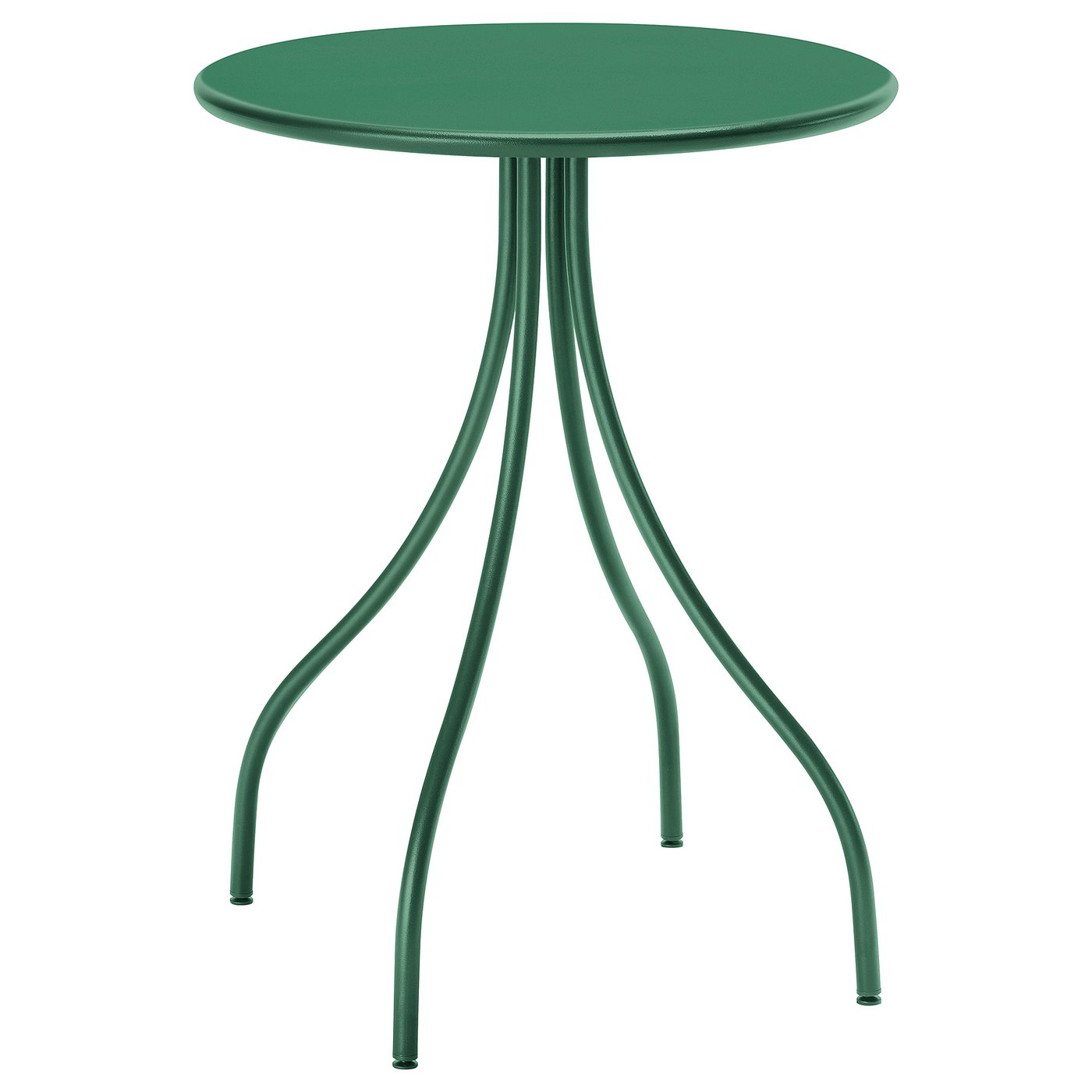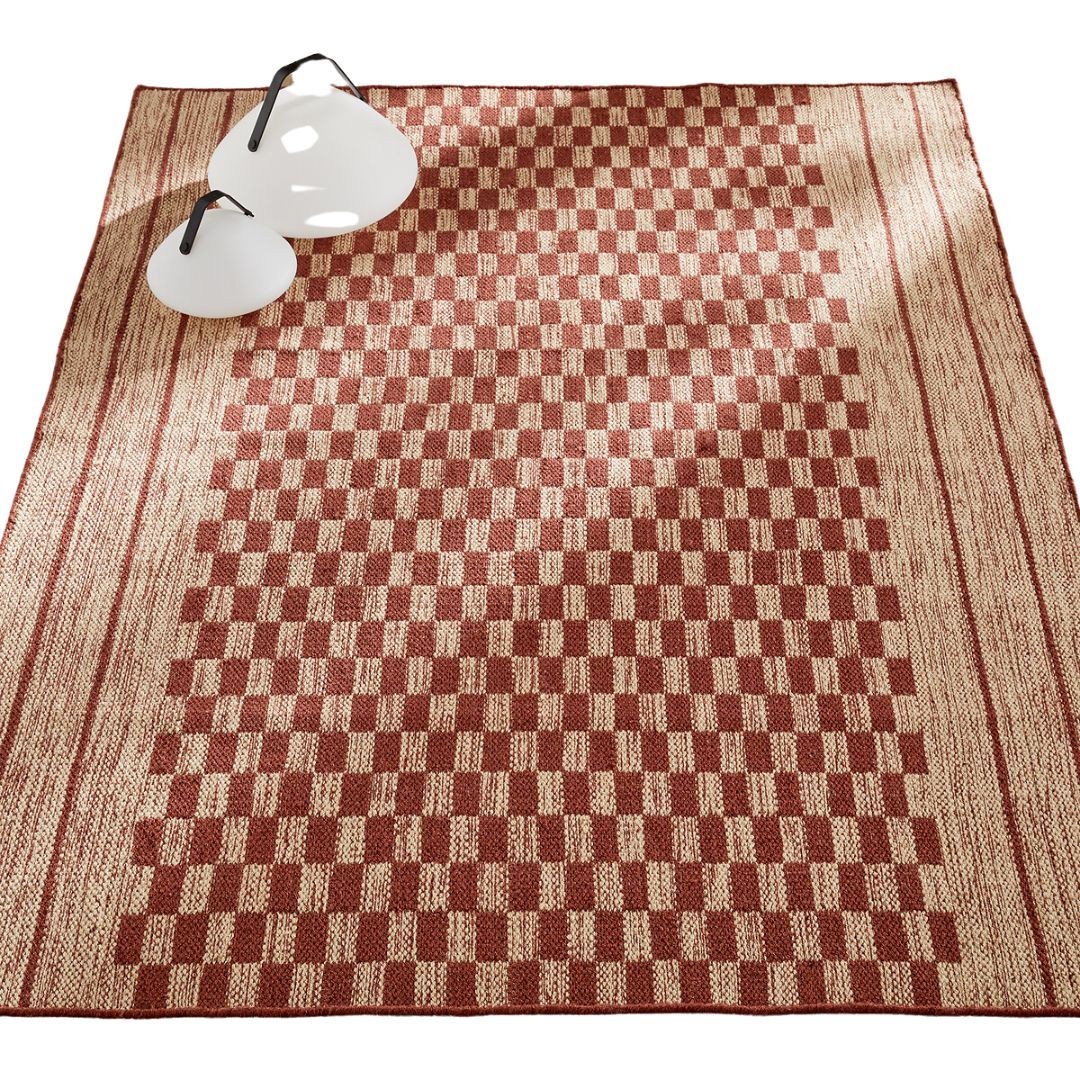Is Decking or Patio the Better Choice for Good-Looking Gardens in 2025?
Weigh up the pros and cons of these different styles and work out which is best for your backyard with advice from experts
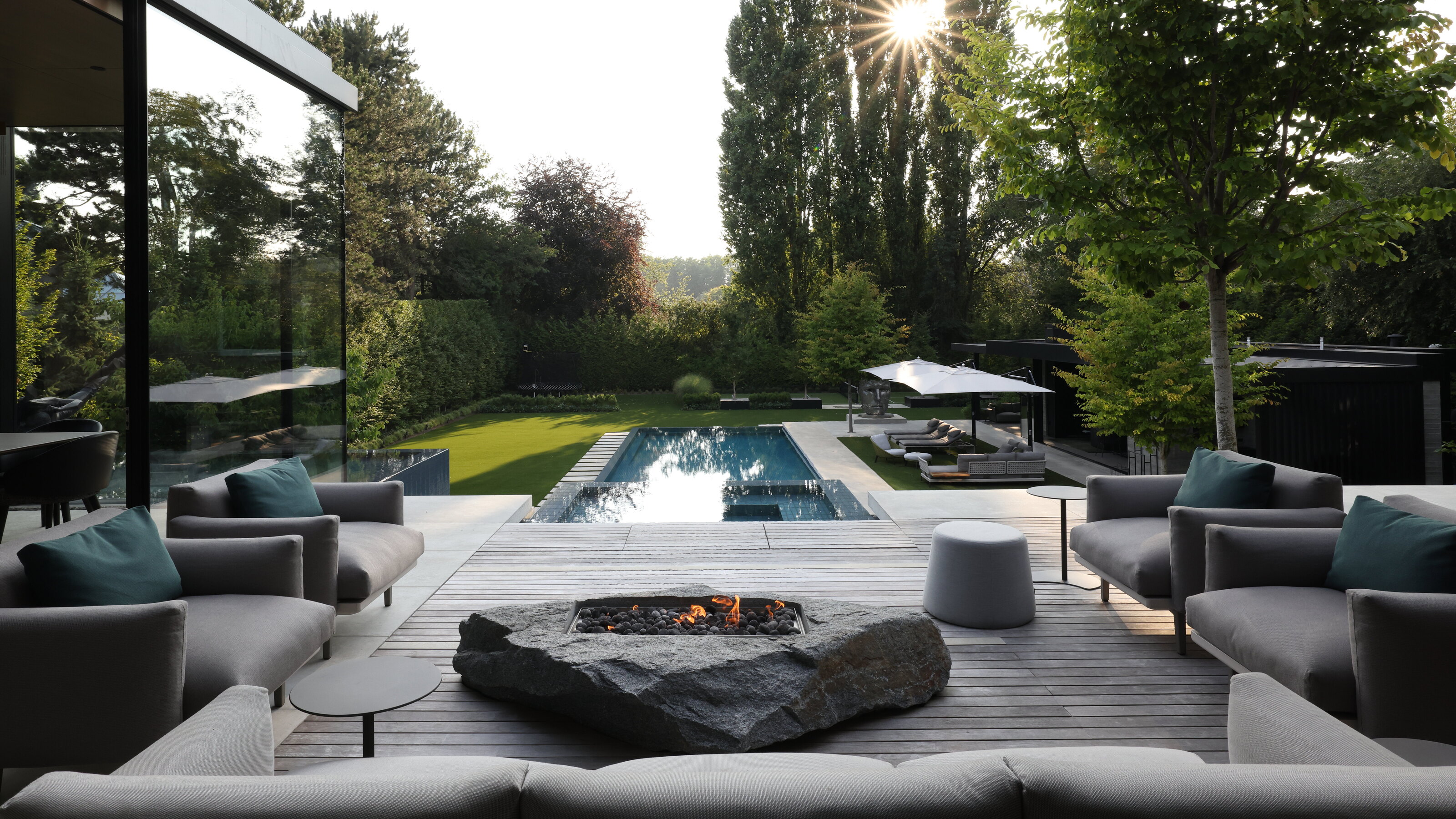
If you want to spend more time entertaining outside this summer, a little renovation can go a long way towards enhancing the enjoyment of your garden and outdoor dining or lounging areas, for you and your guests.
With the wide choice of decking ideas available, it's worth taking the time to consider what will be the best option in both the short and long term. Hasty decisions can cost time, money, and effort to change or put right, so weigh up the various factors before making any decisions.
Generally, a patio is going to last longer and look more dynamic for a design-forward garden, but there are some circumstances when decking wins supreme, and even a mix of the two is best.
If you're not quite sure of the difference, we've asked landscape architects to explain the pros and cons, and the various scenarios each is best suited to.
Decking Vs Patio: Which Is Better?

When considering decking versus a patio, it's not so much a case of which is better, but which is better for your modern garden ideas, your lifestyle and your budget. Sometimes, even both might be the answer.
Adam Sexton of Richardson & Associates Landscape Architecture in Washington, DC explains, "As landscape architects, we assess site conditions, aesthetics, and client needs when determining whether a deck or patio is more appropriate.
"Generally, decking is ideal for sloped or uneven sites where a level surface is needed without extensive excavation, while patios are better suited to flat terrain; they offer a robust, long-term surface that integrates well with the surrounding landscape. Patios can also be constructed with retaining walls and stairs to provide a terrace feel."
The Livingetc newsletters are your inside source for what’s shaping interiors now - and what’s next. Discover trend forecasts, smart style ideas, and curated shopping inspiration that brings design to life. Subscribe today and stay ahead of the curve.
"Both have their advantages, and the choice often depends on the design intent, site conditions, and surrounding context," adds principal landscape architect, Paul Sangha, founder, Paul Sangha Creative. "Stone or tiled patios tend to feel more grounded and visually substantial, often reading as an architectural extension of the home.
"In contrast, decking can bring a sense of lightness and softness, which may be more sympathetic to certain natural settings or desired atmospheres. Functionality is another key factor—patios in high-traffic areas may require more durable materials. We also consider scale carefully; the size of paving stones or the width and length of deck boards can influence the spatial experience and character of the space."

Adam is a landscape designer, creative thinker, and garden enthusiast. He joined Richardson&Associates in 2020 and is passionate about residential landscapes and ecological restoration. Adam earned his bachelor’s degree in Landscape Architecture from Virginia Tech in 2010 and has over a decade of design detailing and construction implementation for projects that range from public parks, campuses, international urban planning, and estate master planning.

Paul Sangha is founder of Paul Sangha Creative, an internationally recognized landscape architectural studio located in Vancouver, BC. With over 35-years of experience, Paul has earned a reputation for delivering the utmost quality in design, attention to detail and exceptional service. Paul's work has received recognition from numerous international design authorities, including the American & Canadian Society of Landscape Architects.
What Is the Difference Between the Two?
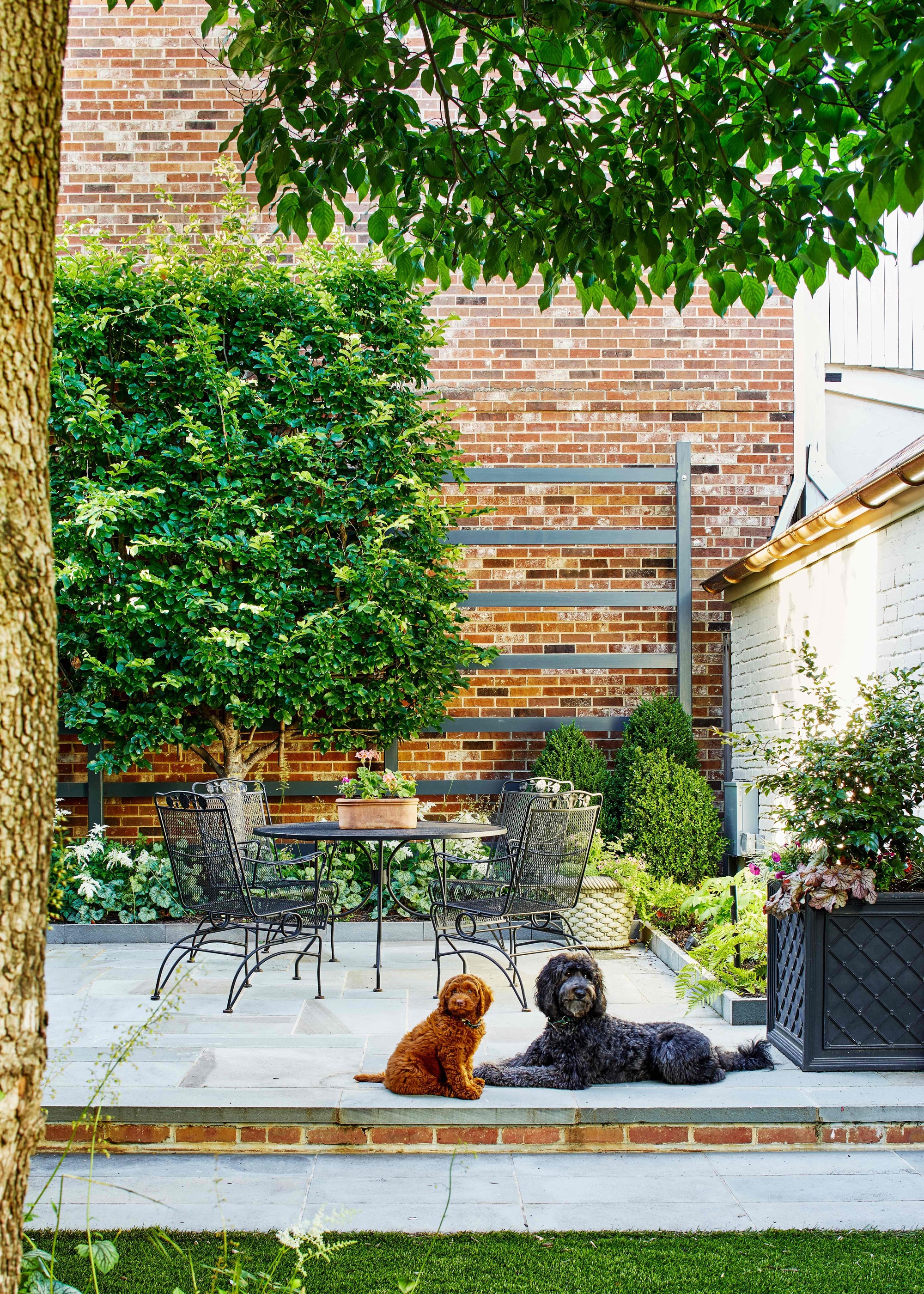
Decking materials generally consist of timber or composite slats attached to a raised platform, while patios are flat surfaces laid with concrete pavers, porcelain tiles, brick, or natural stone.
"Elevated decks adapt to gradients; whereas patios require stable, level ground," explains Adam. "Decks suit relaxed seating or elevated views; patios provide solid footing for dining or high-traffic areas. Decks also create a warm, natural transition from interior to garden, while patios feel grounded and architectural."
"When considering either, we look closely at the style of the home and the materials used inside and out— especially the flooring and exterior finishes," says Paul. "The goal isn’t to necessarily match materials, but to create a palette that feels cohesive.
"Context is just as critical. Is the site exposed to wind, sun or salt water? Is it urban, suburban, or rural? Each setting comes with its own design language and practical considerations. Constructability also plays a big role—what kind of substructure is possible on the site? For example, stone and porcelain patios in many cases require an engineered substructure to support their layout. Sometimes slope, drainage, or existing conditions will steer us toward one solution over the other. It’s all about aligning design, function, and the realities of the site."
What Materials Are Often Used for Decking and Patios?
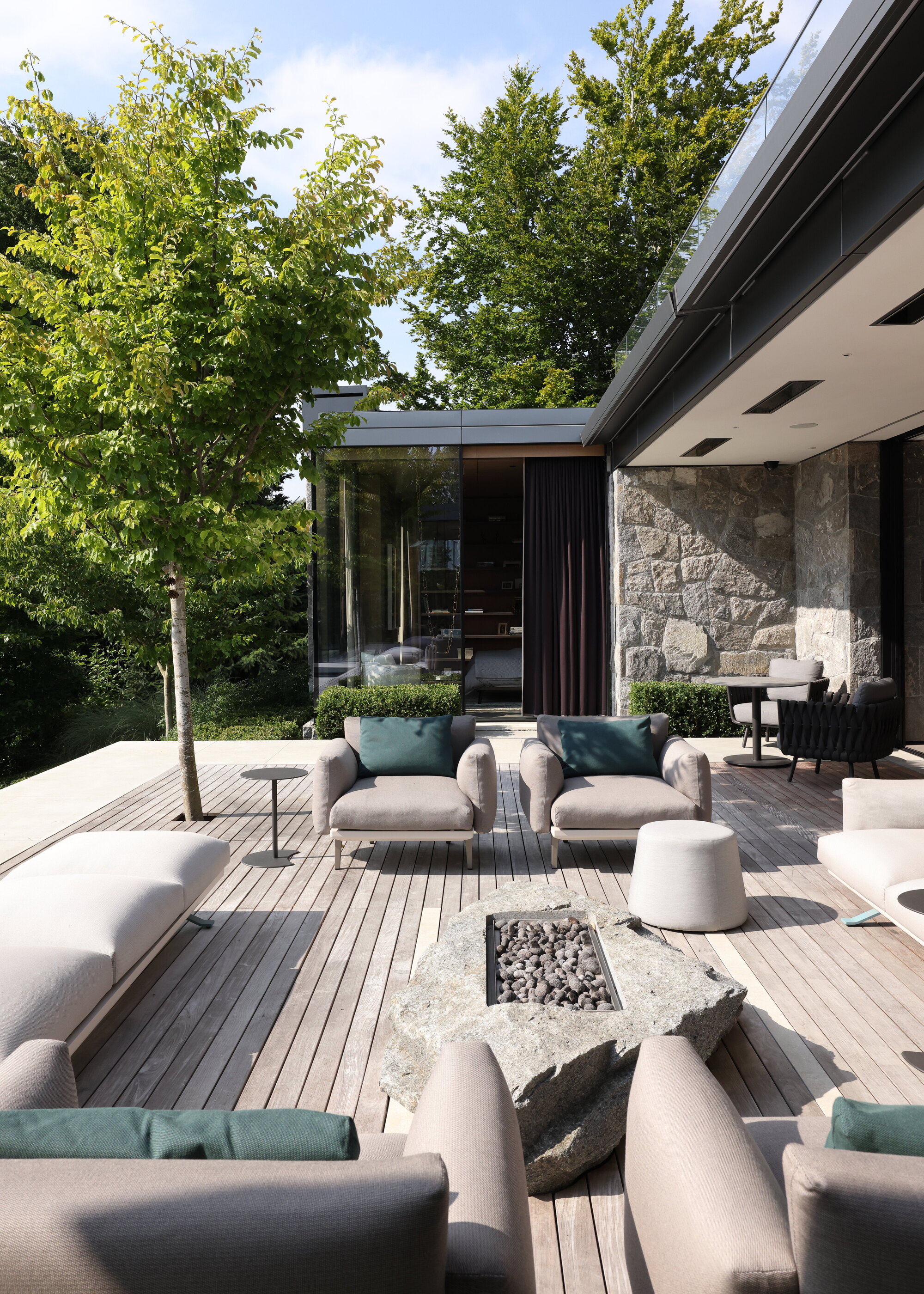
"A deck is a raised, framed structure; most often timber or composite, while a patio is a ground-level, hardscaped surface formed from stone paving, porcelain tile, or concrete pavers," says Adam. "We often specify composite for its durability and low maintenance, or hardwoods for high-end decking projects.
For patios, Adam says, "natural stone and brick paving offer timeless appeal, while porcelain tiles deliver a contemporary, refined finish. Concrete pavers are a practical, cost-effective option."
Paul adds: "We gravitate toward natural materials like stone and wood because they age gracefully and feel rooted in the landscape. Since they occur in nature, they blend seamlessly with their surroundings, creating a timeless aesthetic.
"We lean towards woods such as cedar for decking, which is readily available in our region, or Ipe and Accoya, which are very dense and durable options. The best choice often depends on what’s readily available in your region, so it’s worth asking your local supplier.
"It’s also key that clients understand the upkeep involved with both," continues Paul. "Wood may need periodic re-staining, while stone might require sealing to maintain its finish. Choosing the right material means balancing aesthetic goals with long-term care and how the space will be used."
FAQs
Is it Cheaper to Do a Deck or Patio?
It varies according to your choice of materials. However, it can be less expensive to install decking than to lay a patio. The costs for decking materials tend to be lower than those for a patio, and decking generally takes less time to install, so labour costs can be lower too. Although this does depend on the materials you choose and whether it is a straightforward installation or not.
"Depending on materials and site complexity, decking can be more cost-effective," says Adam.
"A good hardwood deck and paving are not wildly different in cost when installed professionally," says London-based garden designer Kate Gould, founder, Kate Gould Gardens. "For gardens on a budget, a softwood deck will work if it is treated and maintained well. However, ranging from relatively inexpensive sandstones, there will be a stone to suit most budgets."
"We also use poured-in-place concrete, concrete pavers, or porcelain pavers for outdoor patios and terraces," says Paul. "Porcelain and concrete pavers are a great option for clients desiring more visual uniformity in their outdoor flooring, are relatively low maintenance, and generally are more affordable relative to stone."

Kate Gould Gardens began in 1998 and now, 27 years and 5 Chelsea gold medals later, Kate is one of the most sought after garden designers in London. Alongside her talented team, you’ll still find her with her hands in the dirt, installing the latest exquisite planting scheme she has dreamt up.
What Is the Downside of Decking?
Certain types of timber require more maintenance than others, particularly cheaper softwoods, which may require sealing. Some hardwoods will develop a protective patina, but any decking will need to be swept and cleaned regularly.
"Decks (especially those made of timber) need more upkeep; patios generally require lower maintenance," says Adam.
"Both patios and decking require maintenance, but decking can become very slippery in the winter (often more so than paving)," says Kate. "Also, in urban situations, the space between the decking and the ground can become home to rats.
"Composite decking is great for those who want a range of colours to choose from, but it can move more than real wood surfaces and will expand and contract more in hot and cold weather. It will still require cleaning to prevent it from getting slippery," continues Kate.
"With regard to upkeep, decking and paving both require cleaning and maintenance. There is nothing outside when exposed to the elements that is self-cleaning."
There is much to consider besides budget when choosing between decking and a patio. Context, site conditions, and longevity are important points to factor into your decision. Spending a little more on materials and installation now may be more cost-effective in the long term. It may even be worthwhile having both decking and a patio, if that's appropriate for your outdoor space.
"One of our favorite approaches is to combine materials," says Paul. "We’ll use stone for high-traffic walkways and patios, then layer in wood as a warm, inviting surface—almost like a rug— for a cozy seating area within the garden. The contrast creates subtle definition while keeping the palette natural and refined."
Jacky Parker is a freelance lifestyle journalist and writer, producing a wide range of features for magazines and digital platforms. She has written for Livingetc and its sister titles, Homes & Gardens and Country Homes & Interiors for more than 15 years, both as a freelance contributor and as Acting Digital Editor and Acting Style Content Editor, regularly reporting on the latest interiors, gardens and wellness inspiration, speaking to experts in their respective fields, and discovering the best tips.
Jacky has also written for other publications, including Sunday Times Style, The Telegraph, Architectural Digest, House Beautiful, ELLE Decoration, Red, Grand Designs and more.
